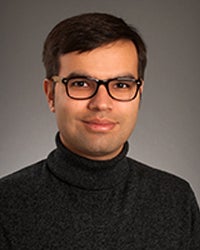
- This event has passed.
Mojtaba Sadegh - Trends, patterns, and social vulnerability landscape of exposure to wildfires in the US
January 26, 2023 @ 10:30 am MST

Dr. Mojtaba Sadegh
Assistant Professor
Boise State University
Trends, patterns, and social vulnerability landscape of exposure to wildfires in the US
CCP Room 259 or join via Zoom
Biography
Mojtaba (Moji) Sadegh is an assistant professor of Civil Engineering at Boise State. He is a civil and environmental engineer by training and a climatologist by passion. Moji received his PhD in Civil and Environmental Engineering from the University of California, Irvine in 2015, and his BS and MS degrees in the same field in 2007 and 2010. He is enthusiastic about learning how Earth functions and how climatic changes shape the future of Earth and its inhabitants. Moji is passionate about increasing the resilience of natural, built and social infrastructure to escalating climate/weather extremes. His research interests encompass a broad range of hydroclimate extremes, including multi-hazard events, droughts, heatwaves, and wildfires. He uses geospatial analysis, machine learning, statistical methods and data fusion/integration techniques, as well as satellite and airborne imagery and products, climate reanalysis data, gridded and in situ observations, and socioeconomic data to unravel mechanisms that drive climate extremes and their societal impacts.
Abstract
An increasing number of wildfire disasters occurred in recent years in the U.S. Here, we demonstrate that cumulative primary human exposure – population residing within large wildfires’ perimeters – was 594,850 people from 2000-2019 across the Contiguous U.S. (CONUS), 82% of which occurred in the Western U.S. Primary population exposure increased by 125% in CONUS in the past two decades, noting large uncertainty ranges. We show that population dynamics from 2000-2019 alone accounted for 24% of the observed increase rate in human exposure, whereas increased wildfire extent drove a majority of the observed trends. Additionally, we document widespread exposure of roads (412,155 km) and transmission powerlines (14,835 km) to large wildfires in CONUS, with an increased rate of 58% and 70% from 2000-2019, respectively. We then assess the social vulnerability landscape of human exposure to wildfires in California, Oregon and Washington that accounted for nearly three-quarters of wildfire exposures in CONUS. We show widely different vulnerability distributions for the exposed population to wildfires between these three states, but all three states observed a large rate of increase in the exposure of their most vulnerable population. Certain dimensions of vulnerability of exposed population, such as “age 65 and older” and “disability”, observed a large rate of worsening in the past two decades, but changes in other dimensions, such as “poverty”, are not as notable. We also show major differences in the landscape of social vulnerability for the entire state population versus those exposed to wildfires, especially in California and Washington, pointing to inequality of wildfire exposure. Our findings highlight the benefits of equitable mitigation and adaptation efforts to help societies cope with wildfires.